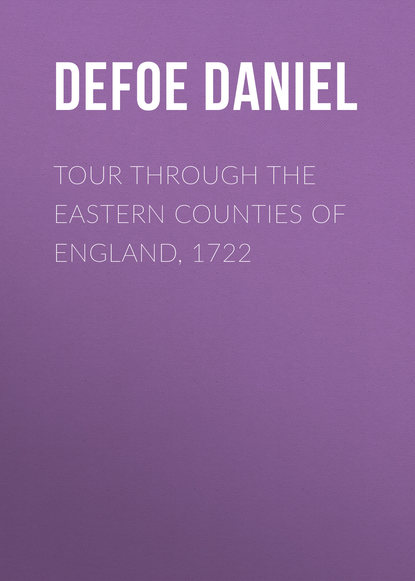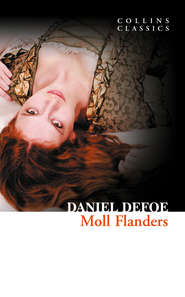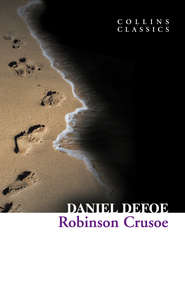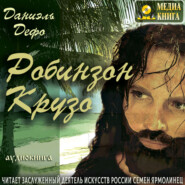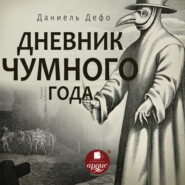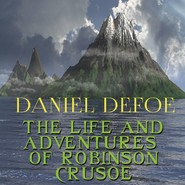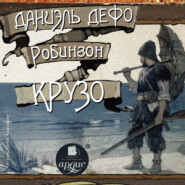По всем вопросам обращайтесь на: info@litportal.ru
(©) 2003-2024.
✖
Tour through the Eastern Counties of England, 1722
Настройки чтения
Размер шрифта
Высота строк
Поля
Tour through the Eastern Counties of England, 1722
Daniel Defoe
Daniel Defoe
Tour through the Eastern Counties of England, 1722
INTRODUCTION
Defoe’s “particular and diverting account of whatever is curious and worth observation” in his native country, told in a series of letters, was founded upon seventeen separate tours in the counties, and three larger tours through the whole country. He said he had “viewed the north part of England and the south part of Scotland five several times over,” and he thought it worth while to note what he saw, because, “the fate of things gives a new face to things; produces changes in low life, and innumerable incidents; plants and supplants families; raises and sinks towns; removes manufactures and trade; great towns decay and small towns rise; new towns, new palaces, and new seats are built every day; great rivers and good harbours dry up, and grow useless; again, new ports are opened; brooks are made rivers; small rivers navigable pools, and harbours are made where there were none before, and the like.” We are endeavouring, by little books published from time to time in this “National Library,” to secure some record of the changes in our land and in our manners as a people, and of what was worth record in his day we can wish for no better reporter than Defoe.
Here, therefore, is Defoe’s first letter, which describes a Tour through the Eastern Counties as they were in 1722. It opens his first volume, published in 1724, which was entitled, “A Tour through the whole Island of Great Britain, Divided into Circuits or Journies. Giving a Particular and Diverting Account of whatever is Curious and worth Observation, viz., I. A Description of the Principal Cities and Towns, their Situation, Magnitude, Government, and Commerce. II. The Customs, Manners, Speech, as also the Exercises, Diversions, and Employment of the People. III. The Produce and Improvement of the Lands, the Trade and Manufactures. IV. The Sea Ports and Fortifications, the Course of Rivers, and the Inland Navigation. V. The Public Edifices, Seats and Palaces of the Nobility and Gentry. With Useful Observations upon the Whole. Particularly fitted for the Reading of such as Desire to Travel over the Island. By a Gentleman.” The Second Volume of the Tour was published in June, 1725; and the Third Volume, giving a Tour through Scotland with a Map of Scotland by Mr. Moll, followed in August, 1726, completing the record of what Defoe called “a tedious and very expensive five years’ Travel.” However tedious the travel may have been, Defoe’s account of it is anything but tedious reading.
The change of times is in this letter vividly illustrated in this volume by Defoe’s account of life as he found it in the undrained Essex marshes. Life in them was so unhealthy that the land was cheap, men thus were tempted to take fevers for grazing and corn-growing. They became fairly acclimatised, but when they brought their wives in fresh and healthy from the uplands the women sickened and perished so fast, that it was common to find a man with his sixth or eighth wife, and Defoe was told of an old farmer who was living with his twenty-fifth wife, and had a son about thirty-five years old, who had been married to about fourteen wives. Custom had even dulled the sense of this horrible state of things until the frequent change of wives became a local joke.
We have also a reminder in this volume of the traces and fresh memories of Civil War in the account of the Siege of Colchester, which is a bit of realisation such as no man could give better than Defoe. We may note also the fulness of detail in his account of Ipswich, a town that he first knew as a child of seven. He tells how it was once noted for strong collier vessels built there, he maintains its honour and explains its decay, while he makes various suggestions for the restoration of prosperity, even to the hint that Ipswich would be a healthy and pleasant place for persons to retire to who would live well upon slender means. He writes, indeed, of Ipswich like a loyal townsman who had lived there all his life.
At Bury St. Edmunds Defoe tolls us how in a pathway between two churches a barrister of good family attempted to assassinate his brother-in-law whom he had invited with his wife and children to supper. On excuse of visiting a neighbour he led him to the ambush of a hired assassin. They left their victim for dead, horribly mangled on the head and face and body with a hedgebill. He lived to bring them to justice, and was living still when Defoe wrote. But the assassins had been condemned to death “on the statute for defacing and dismembering, called the Coventry Act.” This Tour also recalls the days when Bury was a place of fashionable holiday resort. Defoe meditates upon the decline and fall of Dunwich, tells of the coming and going of the swallows from our east coast, and of innumerable swallows whom he saw one day waiting for a favourable wind on the roofs of the church and houses at Southwold. We read of the coming up to London of the Norfolk turkeys on foot, in droves of from three hundred to a thousand, and so many droves that by one route alone, and that not the most crowded – over Stratford Bridge – a hundred and forty thousand birds travelled to London between August and October.
In Norwich, Defoe was less interested than in Ipswich; but of Yarmouth his account is full, and the frequency of wrecks on the east coast, especially about Cromer Bay, which seamen called the Devil’s Throat, is illustrated by the fact that in all the way from Winterton towards Cromer that “the farmers and country people had scarce a barn, or a shed, or a stable, nay not the pales of their yards and gardens, not a hog sty, but what was built of old planks, beams, wales, and timbers, etc., the wrecks of ships, and ruins of mariners’ and merchants’ fortunes.”
Defoe saw the races at Newmarket, where he was “sick of the jockeying part.” He went also to Bury Fair, of which he gives a full description, and at Cambridge he paid honour to the University.
There was another Tour told in letters so near to Defoe’s in date and form that the first or second volume of one work is often sold with the second or first volume of the other. The book not by Defoe was entitled “A Journey through England in Familiar Letters from a Gentleman” here to his friend abroad, in two vols., 1722, with a third volume on Scotland in 1726. All editions published after Defoe’s death in 1731 have matter added by others. The addition of new matter began with the novelist Samuel Richardson in 1732.
Some time afterwards there were changes announced as “by a gentleman of eminence in the literary world.”
H. M.
I began my travels where I purpose to end them, viz., at the City of London, and therefore my account of the city itself will come last, that is to say, at the latter end of my southern progress; and as in the course of this journey I shall have many occasions to call it a circuit, if not a circle, so I chose to give it the title of circuits in the plural, because I do not pretend to have travelled it all in one journey, but in many, and some of them many times over; the better to inform myself of everything I could find worth taking notice of.
I hope it will appear that I am not the less, but the more capable of giving a full account of things, by how much the more deliberation I have taken in the view of them, and by how much the oftener I have had opportunity to see them.
I set out the 3rd of April, 1722, going first eastward, and took what I think I may very honestly call a circuit in the very letter of it; for I went down by the coast of the Thames through the Marshes or Hundreds on the south side of the county of Essex, till I came to Malden, Colchester, and Harwich, thence continuing on the coast of Suffolk to Yarmouth; thence round by the edge of the sea, on the north and west side of Norfolk, to Lynn, Wisbech, and the Wash; thence back again, on the north side of Suffolk and Essex, to the west, ending it in Middlesex, near the place where I began it, reserving the middle or centre of the several counties to some little excursions, which I made by themselves.
Passing Bow Bridge, where the county of Essex begins, the first observation I made was, that all the villages which may be called the neighbourhood of the city of London on this, as well as on the other sides thereof, which I shall speak to in their order; I say, all those villages are increased in buildings to a strange degree, within the compass of about twenty or thirty years past at the most.
The village of Stratford, the first in this county from London, is not only increased, but, I believe, more than doubled in that time; every vacancy filled up with new houses, and two little towns or hamlets, as they may be called, on the forest side of the town entirely new, namely Maryland Point and the Gravel Pits, one facing the road to Woodford and Epping, and the other facing the road to Ilford; and as for the hither part, it is almost joined to Bow, in spite of rivers, canals, marshy grounds, &c. Nor is this increase of building the case only in this and all the other villages round London; but the increase of the value and rent of the houses formerly standing has, in that compass of years above-mentioned, advanced to a very great degree, and I may venture to say at least the fifth part; some think a third part, above what they were before.
This is indeed most visible, speaking of Stratford in Essex; but it is the same thing in proportion in other villages adjacent, especially on the forest side; as at Low Leyton, Leytonstone, Walthamstow, Woodford, Wanstead, and the towns of West Ham, Plaistow, Upton, etc. In all which places, or near them (as the inhabitants say), above a thousand new foundations have been erected, besides old houses repaired, all since the Revolution; and this is not to be forgotten too, that this increase is, generally speaking, of handsome, large houses, from £20 a year to £60, very few under £20 a year; being chiefly for the habitations of the richest citizens, such as either are able to keep two houses, one in the country and one in the city; or for such citizens as being rich, and having left off trade, live altogether in these neighbouring villages, for the pleasure and health of the latter part of their days.
The truth of this may at least appear, in that they tell me there are no less than two hundred coaches kept by the inhabitants within the circumference of these few villages named above, besides such as are kept by accidental lodgers.
This increase of the inhabitants, and the cause of it, I shall enlarge upon when I come to speak of the like in the counties of Middlesex, Surrey, &c, where it is the same, only in a much greater degree. But this I must take notice of here, that this increase causes those villages to be much pleasanter and more sociable than formerly, for now people go to them, not for retirement into the country, but for good company; of which, that I may speak to the ladies as well as other authors do, there are in these villages, nay, in all, three or four excepted, excellent conversation, and a great deal of it, and that without the mixture of assemblies, gaming-houses, and public foundations of vice and debauchery; and particularly I find none of those incentives kept up on this side the country.
Mr. Camden, and his learned continuator, Bishop Gibson, have ransacked this country for its antiquities, and have left little unsearched; and as it is not my present design to say much of what has been said already, I shall touch very lightly where two such excellent antiquaries have gone before me; except it be to add what may have been since discovered, which as to these parts is only this: That there seems to be lately found out in the bottom of the Marshes (generally called Hackney Marsh, and beginning near about the place now called the Wick, between Old Ford and the said Wick), the remains of a great stone causeway, which, as it is supposed, was the highway, or great road from London into Essex, and the same which goes now over the great bridge between Bow and Stratford.
That the great road lay this way, and that the great causeway landed again just over the river, where now the Temple Mills stand, and passed by Sir Thomas Hickes’s house at Ruckolls, all this is not doubted; and that it was one of those famous highways made by the Romans there is undoubted proof, by the several marks of Roman work, and by Roman coins and other antiquities found there, some of which are said to be deposited in the hands of the Rev. Mr. Strype, vicar of the parish of Low Leyton.
From hence the great road passed up to Leytonstone, a place by some known now as much by the sign of the “Green Man,” formerly a lodge upon the edge of the forest; and crossing by Wanstead House, formerly the dwelling of Sir Josiah Child, now of his son the Lord Castlemain (of which hereafter), went over the same river which we now pass at Ilford; and passing that part of the great forest which we now call Hainault Forest, came into that which is now the great road, a little on this side the Whalebone, a place on the road so called because the rib-bone of a great whale, which was taken in the River Thames the same year that Oliver Cromwell died, 1658, was fixed there for a monument of that monstrous creature, it being at first about eight-and-twenty feet long.
According to my first intention of effectually viewing the sea-coast of these three counties, I went from Stratford to Barking, a large market-town, but chiefly inhabited by fishermen, whose smacks ride in the Thames, at the mouth of their river, from whence their fish is sent up to London to the market at Billingsgate by small boats, of which I shall speak by itself in my description of London.
One thing I cannot omit in the mention of these Barking fisher-smacks, viz., that one of those fishermen, a very substantial and experienced man, convinced me that all the pretences to bringing fish alive to London market from the North Seas, and other remote places on the coast of Great Britain, by the new-built sloops called fish-pools, have not been able to do anything but what their fishing-smacks are able on the same occasion to perform. These fishing-smacks are very useful vessels to the public upon many occasions; as particularly, in time of war they are used as press-smacks, running to all the northern and western coasts to pick up seamen to man the navy, when any expedition is at hand that requires a sudden equipment; at other times, being excellent sailors, they are tenders to particular men of war; and on an expedition they have been made use of as machines for the blowing up of fortified ports and havens; as at Calais, St. Malo, and other places.
This parish of Barking is very large, and by the improvement of lands taken in out of the Thames, and out of the river which runs by the town, the tithes, as the townsmen assured me, are worth above £600 per annum, including, small tithes. Note. – This parish has two or three chapels of ease, viz., one at Ilford, and one on the side of Hainault Forest, called New Chapel.
Sir Thomas Fanshaw, of an ancient Roman Catholic family, has a very good estate in this parish. A little beyond the town, on the road to Dagenham, stood a great house, ancient, and now almost fallen down, where tradition says the Gunpowder Treason Plot was at first contrived, and that all the first consultations about it were held there.
This side of the county is rather rich in land than in inhabitants, occasioned chiefly by the unhealthiness of the air; for these low marsh grounds, which, with all the south side of the county, have been saved out of the River Thames, and out of the sea, where the river is wide enough to be called so, begin here, or rather begin at West Ham, by Stratford, and continue to extend themselves, from hence eastward, growing wider and wider till we come beyond Tilbury, when the flat country lies six, seven, or eight miles broad, and is justly said to be both unhealthy and unpleasant.
However, the lands are rich, and, as is observable, it is very good farming in the marshes, because the landlords let good pennyworths, for it being a place where everybody cannot live, those that venture it will have encouragement and indeed it is but reasonable they should.
Several little observations I made in this part of the county of Essex.
1. We saw, passing from Barking to Dagenham, the famous breach, made by an inundation of the Thames, which was so great as that it laid near 5,000 acres of land under water, but which after near ten years lying under water, and being several times blown up, has been at last effectually stopped by the application of Captain Perry, the gentleman who, for several years, had been employed in the Czar of Muscovy’s works, at Veronitza, on the River Don. This breach appeared now effectually made up, and they assured us that the new work, where the breach was, is by much esteemed the strongest of all the sea walls in that level.
2. It was observable that great part of the lands in these levels, especially those on this side East Tilbury, are held by the farmers, cow-keepers, and grazing butchers who live in and near London, and that they are generally stocked (all the winter half year) with large fat sheep, viz., Lincolnshire and Leicestershire wethers, which they buy in Smithfield in September and October, when the Lincolnshire and Leicestershire graziers sell off their stock, and are kept here till Christmas, or Candlemas, or thereabouts; and though they are not made at all fatter here than they were when bought in, yet the farmer or butcher finds very good advantage in it, by the difference of the price of mutton between Michaelmas, when it is cheapest, and Candlemas, when it is dearest; this is what the butchers value themselves upon, when they tell us at the market that it is right marsh-mutton.
3. In the bottom of these Marshes, and close to the edge of the river, stands the strong fortress of Tilbury, called Tilbury Fort, which may justly be looked upon as the key of the River Thames, and consequently the key of the City of London. It is a regular fortification. The design of it was a pentagon, but the water bastion, as it would have been called, was never built. The plan was laid out by Sir Martin Beckman, chief engineer to King Charles II., who also designed the works at Sheerness. The esplanade of the fort is very large, and the bastions the largest of any in England, the foundation is laid so deep, and piles under that, driven down two an end of one another, so far, till they were assured they were below the channel of the river, and that the piles, which were shed with iron, entered into the solid chalk rock adjoining to, or reaching from, the chalk hills on the other side. These bastions settled considerably at first, as did also part of the curtain, the great quantity of earth that was brought to fill them up, necessarily, requiring to be made solid by time; but they are now firm as the rocks of chalk which they came from, and the filling up one of these bastions, as I have been told by good hands, cost the Government £6,000, being filled with chalk rubbish fetched from the chalk pits at Northfleet, just above Gravesend.
The work to the land side is complete; the bastions are faced with brick. There is a double ditch, or moat, the innermost part of which is 180 feet broad; there is a good counterscarp, and a covered way marked out with ravelins and tenailles, but they are not raised a second time after their first settling.
On the land side there are also two small redoubts of brick, but of very little strength, for the chief strength of this fort on the land side consists in this, that they are able to lay the whole level under water, and so to make it impossible for an enemy to make any approaches to the fort that way.
On the side next the river there is a very strong curtain, with a noble gate called the Water Gate in the middle, and the ditch is palisadoed. At the place where the water bastion was designed to be built, and which by the plan should run wholly out into the river, so to flank the two curtains of each side; I say, in the place where it should have been, stands a high tower, which they tell us was built in Queen Elizabeth’s time, and was called the Block House; the side next the water is vacant.
Before this curtain, above and below the said vacancy, is a platform in the place of a counterscarp, on which are planted 106 pieces of cannon, generally all of them carrying from twenty-four to forty-six pound ball; a battery so terrible as well imports the consequence of that place; besides which, there are smaller pieces planted between, and the bastions and curtain also are planted with guns; so that they must be bold fellows who will venture in the biggest ships the world has heard of to pass such a battery, if the men appointed to serve the guns do their duty like stout fellows, as becomes them.
The present government of this important place is under the prudent administration of the Right Honourable the Lord Newbrugh.
From hence there is nothing for many miles together remarkable but a continued level of unhealthy marshes, called the Three Hundreds, till we come before Leigh, and to the mouth of the River Chelmer, and Blackwater. These rivers united make a large firth, or inlet of the sea, which by Mr. Camden is called Idumanum Fluvium; but by our fishermen and seamen, who use it as a port, it is called Malden Water.
In this inlet of the sea is Osey, or Osyth Island, commonly called Oosy Island, so well known by our London men of pleasure for the infinite number of wild fowl, that is to say, duck, mallard, teal, and widgeon, of which there are such vast flights, that they tell us the island, namely the creek, seems covered with them at certain times of the year, and they go from London on purpose for the pleasure of shooting; and, indeed, often come home very well laden with game. But it must be remembered too that those gentlemen who are such lovers of the sport, and go so far for it, often return with an Essex ague on their backs, which they find a heavier load than the fowls they have shot.
It is on this shore, and near this creek, that the greatest quantity of fresh fish is caught which supplies not this country only, but London markets also. On the shore, beginning a little below Candy Island, or rather below Leigh Road, there lies a great shoal or sand called the Black Tail, which runs out near three leagues into the sea due east; at the end of it stands a pole or mast, set up by the Trinity House men of London, whose business is to lay buoys and set up sea marks for the direction of the sailors; this is called Shoe Beacon, from the point of land where this sand begins, which is called Shoeburyness, and that from the town of Shoebury, which stands by it. From this sand, and on the edge of Shoebury, before it, or south west of it, all along, to the mouth of Colchester water, the shore is full of shoals and sands, with some deep channels between; all which are so full of fish, that not only the Barking fishing-smacks come hither to fish, but the whole shore is full of small fisher-boats in very great numbers, belonging to the villages and towns on the coast, who come in every tide with what they take; and selling the smaller fish in the country, send the best and largest away upon horses, which go night and day to London market.
N.B.– I am the more particular in my remarks on this place, because in the course of my travels the reader will meet with the like in almost every place of note through the whole island, where it will be seen how this whole kingdom, as well the people as the land, and even the sea, in every part of it, are employed to furnish something, and I may add, the best of everything, to supply the City of London with provisions; I mean by provisions, corn, flesh, fish, butter, cheese, salt, fuel, timber, etc., and clothes also; with everything necessary for building, and furniture for their own use or for trade; of all which in their order.
On this shore also are taken the best and nicest, though not the largest, oysters in England; the spot from whence they have their common appellation is a little bank called Woelfleet, scarce to be called an island, in the mouth of the River Crouch, now called Crooksea Water; but the chief place where the said oysters are now had is from Wyvenhoe and the shores adjacent, whither they are brought by the fishermen, who take them at the mouth of that they call Colchester water and about the sand they call the Spits, and carry them up to Wyvenhoe, where they are laid in beds or pits on the shore to feed, as they call it; and then being barrelled up and carried to Colchester, which is but three miles off, they are sent to London by land, and are from thence called Colchester oysters.
The chief sort of other fish which they carry from this part of the shore to London are soles, which they take sometimes exceeding large, and yield a very good price at London market. Also sometimes middling turbot, with whiting, codling and large flounders; the small fish, as above, they sell in the country.
In the several creeks and openings, as above, on this shore there are also other islands, but of no particular note, except Mersey, which lies in the middle of the two openings between Malden Water and Colchester Water; being of the most difficult access, so that it is thought a thousand men well provided might keep possession of it against a great force, whether by land or sea. On this account, and because if possessed by an enemy it would shut up all the navigation and fishery on that side, the Government formerly built a fort on the south-east point of it; and generally in case of Dutch war, there is a strong body of troops kept there to defend it.
At this place may be said to end what we call the Hundreds of Essex – that is to say, the three Hundreds or divisions which include the marshy country, viz., Barnstable Hundred, Rochford Hundred, and Dengy Hundred.
I have one remark more before I leave this damp part of the world, and which I cannot omit on the women’s account, namely, that I took notice of a strange decay of the sex here; insomuch that all along this country it was very frequent to meet with men that had had from five or six to fourteen or fifteen wives; nay, and some more. And I was informed that in the marshes on the other side of the river over against Candy Island there was a farmer who was then living with the five-and-twentieth wife, and that his son, who was but about thirty-five years old, had already had about fourteen. Indeed, this part of the story I only had by report, though from good hands too; but the other is well known and easy to be inquired into about Fobbing, Curringham, Thundersly, Benfleet, Prittlewell, Wakering, Great Stambridge, Cricksea, Burnham, Dengy, and other towns of the like situation. The reason, as a merry fellow told me, who said he had had about a dozen and a half of wives (though I found afterwards he fibbed a little) was this: That they being bred in the marshes themselves and seasoned to the place, did pretty well with it; but that they always went up into the hilly country, or, to speak their own language, into the uplands for a wife. That when they took the young lasses out of the wholesome and fresh air they were healthy, fresh, and clear, and well; but when they came out of their native air into the marshes among the fogs and damps, there they presently changed their complexion, got an ague or two, and seldom held it above half a year, or a year at most; “And then,” said he, “we go to the uplands again and fetch another;” so that marrying of wives was reckoned a kind of good farm to them. It is true the fellow told this in a kind of drollery and mirth; but the fact, for all that, is certainly true; and that they have abundance of wives by that very means. Nor is it less true that the inhabitants in these places do not hold it out, as in other countries, and as first you seldom meet with very ancient people among the poor, as in other places we do, so, take it one with another, not one-half of the inhabitants are natives of the place; but such as from other countries or in other parts of this country settle here for the advantage of good farms; for which I appeal to any impartial inquiry, having myself examined into it critically in several places.
From the marshes and low grounds being not able to travel without many windings and indentures by reason of the creeks and waters, I came up to the town of Malden, a noted market town situate at the conflux or joining of two principal rivers in this county, the Chelm or Chelmer, and the Blackwater, and where they enter into the sea. The channel, as I have noted, is called by the sailors Malden Water, and is navigable up to the town, where by that means is a great trade for carrying corn by water to London; the county of Essex being (especially on all that side) a great corn county.
Daniel Defoe
Daniel Defoe
Tour through the Eastern Counties of England, 1722
INTRODUCTION
Defoe’s “particular and diverting account of whatever is curious and worth observation” in his native country, told in a series of letters, was founded upon seventeen separate tours in the counties, and three larger tours through the whole country. He said he had “viewed the north part of England and the south part of Scotland five several times over,” and he thought it worth while to note what he saw, because, “the fate of things gives a new face to things; produces changes in low life, and innumerable incidents; plants and supplants families; raises and sinks towns; removes manufactures and trade; great towns decay and small towns rise; new towns, new palaces, and new seats are built every day; great rivers and good harbours dry up, and grow useless; again, new ports are opened; brooks are made rivers; small rivers navigable pools, and harbours are made where there were none before, and the like.” We are endeavouring, by little books published from time to time in this “National Library,” to secure some record of the changes in our land and in our manners as a people, and of what was worth record in his day we can wish for no better reporter than Defoe.
Here, therefore, is Defoe’s first letter, which describes a Tour through the Eastern Counties as they were in 1722. It opens his first volume, published in 1724, which was entitled, “A Tour through the whole Island of Great Britain, Divided into Circuits or Journies. Giving a Particular and Diverting Account of whatever is Curious and worth Observation, viz., I. A Description of the Principal Cities and Towns, their Situation, Magnitude, Government, and Commerce. II. The Customs, Manners, Speech, as also the Exercises, Diversions, and Employment of the People. III. The Produce and Improvement of the Lands, the Trade and Manufactures. IV. The Sea Ports and Fortifications, the Course of Rivers, and the Inland Navigation. V. The Public Edifices, Seats and Palaces of the Nobility and Gentry. With Useful Observations upon the Whole. Particularly fitted for the Reading of such as Desire to Travel over the Island. By a Gentleman.” The Second Volume of the Tour was published in June, 1725; and the Third Volume, giving a Tour through Scotland with a Map of Scotland by Mr. Moll, followed in August, 1726, completing the record of what Defoe called “a tedious and very expensive five years’ Travel.” However tedious the travel may have been, Defoe’s account of it is anything but tedious reading.
The change of times is in this letter vividly illustrated in this volume by Defoe’s account of life as he found it in the undrained Essex marshes. Life in them was so unhealthy that the land was cheap, men thus were tempted to take fevers for grazing and corn-growing. They became fairly acclimatised, but when they brought their wives in fresh and healthy from the uplands the women sickened and perished so fast, that it was common to find a man with his sixth or eighth wife, and Defoe was told of an old farmer who was living with his twenty-fifth wife, and had a son about thirty-five years old, who had been married to about fourteen wives. Custom had even dulled the sense of this horrible state of things until the frequent change of wives became a local joke.
We have also a reminder in this volume of the traces and fresh memories of Civil War in the account of the Siege of Colchester, which is a bit of realisation such as no man could give better than Defoe. We may note also the fulness of detail in his account of Ipswich, a town that he first knew as a child of seven. He tells how it was once noted for strong collier vessels built there, he maintains its honour and explains its decay, while he makes various suggestions for the restoration of prosperity, even to the hint that Ipswich would be a healthy and pleasant place for persons to retire to who would live well upon slender means. He writes, indeed, of Ipswich like a loyal townsman who had lived there all his life.
At Bury St. Edmunds Defoe tolls us how in a pathway between two churches a barrister of good family attempted to assassinate his brother-in-law whom he had invited with his wife and children to supper. On excuse of visiting a neighbour he led him to the ambush of a hired assassin. They left their victim for dead, horribly mangled on the head and face and body with a hedgebill. He lived to bring them to justice, and was living still when Defoe wrote. But the assassins had been condemned to death “on the statute for defacing and dismembering, called the Coventry Act.” This Tour also recalls the days when Bury was a place of fashionable holiday resort. Defoe meditates upon the decline and fall of Dunwich, tells of the coming and going of the swallows from our east coast, and of innumerable swallows whom he saw one day waiting for a favourable wind on the roofs of the church and houses at Southwold. We read of the coming up to London of the Norfolk turkeys on foot, in droves of from three hundred to a thousand, and so many droves that by one route alone, and that not the most crowded – over Stratford Bridge – a hundred and forty thousand birds travelled to London between August and October.
In Norwich, Defoe was less interested than in Ipswich; but of Yarmouth his account is full, and the frequency of wrecks on the east coast, especially about Cromer Bay, which seamen called the Devil’s Throat, is illustrated by the fact that in all the way from Winterton towards Cromer that “the farmers and country people had scarce a barn, or a shed, or a stable, nay not the pales of their yards and gardens, not a hog sty, but what was built of old planks, beams, wales, and timbers, etc., the wrecks of ships, and ruins of mariners’ and merchants’ fortunes.”
Defoe saw the races at Newmarket, where he was “sick of the jockeying part.” He went also to Bury Fair, of which he gives a full description, and at Cambridge he paid honour to the University.
There was another Tour told in letters so near to Defoe’s in date and form that the first or second volume of one work is often sold with the second or first volume of the other. The book not by Defoe was entitled “A Journey through England in Familiar Letters from a Gentleman” here to his friend abroad, in two vols., 1722, with a third volume on Scotland in 1726. All editions published after Defoe’s death in 1731 have matter added by others. The addition of new matter began with the novelist Samuel Richardson in 1732.
Some time afterwards there were changes announced as “by a gentleman of eminence in the literary world.”
H. M.
I began my travels where I purpose to end them, viz., at the City of London, and therefore my account of the city itself will come last, that is to say, at the latter end of my southern progress; and as in the course of this journey I shall have many occasions to call it a circuit, if not a circle, so I chose to give it the title of circuits in the plural, because I do not pretend to have travelled it all in one journey, but in many, and some of them many times over; the better to inform myself of everything I could find worth taking notice of.
I hope it will appear that I am not the less, but the more capable of giving a full account of things, by how much the more deliberation I have taken in the view of them, and by how much the oftener I have had opportunity to see them.
I set out the 3rd of April, 1722, going first eastward, and took what I think I may very honestly call a circuit in the very letter of it; for I went down by the coast of the Thames through the Marshes or Hundreds on the south side of the county of Essex, till I came to Malden, Colchester, and Harwich, thence continuing on the coast of Suffolk to Yarmouth; thence round by the edge of the sea, on the north and west side of Norfolk, to Lynn, Wisbech, and the Wash; thence back again, on the north side of Suffolk and Essex, to the west, ending it in Middlesex, near the place where I began it, reserving the middle or centre of the several counties to some little excursions, which I made by themselves.
Passing Bow Bridge, where the county of Essex begins, the first observation I made was, that all the villages which may be called the neighbourhood of the city of London on this, as well as on the other sides thereof, which I shall speak to in their order; I say, all those villages are increased in buildings to a strange degree, within the compass of about twenty or thirty years past at the most.
The village of Stratford, the first in this county from London, is not only increased, but, I believe, more than doubled in that time; every vacancy filled up with new houses, and two little towns or hamlets, as they may be called, on the forest side of the town entirely new, namely Maryland Point and the Gravel Pits, one facing the road to Woodford and Epping, and the other facing the road to Ilford; and as for the hither part, it is almost joined to Bow, in spite of rivers, canals, marshy grounds, &c. Nor is this increase of building the case only in this and all the other villages round London; but the increase of the value and rent of the houses formerly standing has, in that compass of years above-mentioned, advanced to a very great degree, and I may venture to say at least the fifth part; some think a third part, above what they were before.
This is indeed most visible, speaking of Stratford in Essex; but it is the same thing in proportion in other villages adjacent, especially on the forest side; as at Low Leyton, Leytonstone, Walthamstow, Woodford, Wanstead, and the towns of West Ham, Plaistow, Upton, etc. In all which places, or near them (as the inhabitants say), above a thousand new foundations have been erected, besides old houses repaired, all since the Revolution; and this is not to be forgotten too, that this increase is, generally speaking, of handsome, large houses, from £20 a year to £60, very few under £20 a year; being chiefly for the habitations of the richest citizens, such as either are able to keep two houses, one in the country and one in the city; or for such citizens as being rich, and having left off trade, live altogether in these neighbouring villages, for the pleasure and health of the latter part of their days.
The truth of this may at least appear, in that they tell me there are no less than two hundred coaches kept by the inhabitants within the circumference of these few villages named above, besides such as are kept by accidental lodgers.
This increase of the inhabitants, and the cause of it, I shall enlarge upon when I come to speak of the like in the counties of Middlesex, Surrey, &c, where it is the same, only in a much greater degree. But this I must take notice of here, that this increase causes those villages to be much pleasanter and more sociable than formerly, for now people go to them, not for retirement into the country, but for good company; of which, that I may speak to the ladies as well as other authors do, there are in these villages, nay, in all, three or four excepted, excellent conversation, and a great deal of it, and that without the mixture of assemblies, gaming-houses, and public foundations of vice and debauchery; and particularly I find none of those incentives kept up on this side the country.
Mr. Camden, and his learned continuator, Bishop Gibson, have ransacked this country for its antiquities, and have left little unsearched; and as it is not my present design to say much of what has been said already, I shall touch very lightly where two such excellent antiquaries have gone before me; except it be to add what may have been since discovered, which as to these parts is only this: That there seems to be lately found out in the bottom of the Marshes (generally called Hackney Marsh, and beginning near about the place now called the Wick, between Old Ford and the said Wick), the remains of a great stone causeway, which, as it is supposed, was the highway, or great road from London into Essex, and the same which goes now over the great bridge between Bow and Stratford.
That the great road lay this way, and that the great causeway landed again just over the river, where now the Temple Mills stand, and passed by Sir Thomas Hickes’s house at Ruckolls, all this is not doubted; and that it was one of those famous highways made by the Romans there is undoubted proof, by the several marks of Roman work, and by Roman coins and other antiquities found there, some of which are said to be deposited in the hands of the Rev. Mr. Strype, vicar of the parish of Low Leyton.
From hence the great road passed up to Leytonstone, a place by some known now as much by the sign of the “Green Man,” formerly a lodge upon the edge of the forest; and crossing by Wanstead House, formerly the dwelling of Sir Josiah Child, now of his son the Lord Castlemain (of which hereafter), went over the same river which we now pass at Ilford; and passing that part of the great forest which we now call Hainault Forest, came into that which is now the great road, a little on this side the Whalebone, a place on the road so called because the rib-bone of a great whale, which was taken in the River Thames the same year that Oliver Cromwell died, 1658, was fixed there for a monument of that monstrous creature, it being at first about eight-and-twenty feet long.
According to my first intention of effectually viewing the sea-coast of these three counties, I went from Stratford to Barking, a large market-town, but chiefly inhabited by fishermen, whose smacks ride in the Thames, at the mouth of their river, from whence their fish is sent up to London to the market at Billingsgate by small boats, of which I shall speak by itself in my description of London.
One thing I cannot omit in the mention of these Barking fisher-smacks, viz., that one of those fishermen, a very substantial and experienced man, convinced me that all the pretences to bringing fish alive to London market from the North Seas, and other remote places on the coast of Great Britain, by the new-built sloops called fish-pools, have not been able to do anything but what their fishing-smacks are able on the same occasion to perform. These fishing-smacks are very useful vessels to the public upon many occasions; as particularly, in time of war they are used as press-smacks, running to all the northern and western coasts to pick up seamen to man the navy, when any expedition is at hand that requires a sudden equipment; at other times, being excellent sailors, they are tenders to particular men of war; and on an expedition they have been made use of as machines for the blowing up of fortified ports and havens; as at Calais, St. Malo, and other places.
This parish of Barking is very large, and by the improvement of lands taken in out of the Thames, and out of the river which runs by the town, the tithes, as the townsmen assured me, are worth above £600 per annum, including, small tithes. Note. – This parish has two or three chapels of ease, viz., one at Ilford, and one on the side of Hainault Forest, called New Chapel.
Sir Thomas Fanshaw, of an ancient Roman Catholic family, has a very good estate in this parish. A little beyond the town, on the road to Dagenham, stood a great house, ancient, and now almost fallen down, where tradition says the Gunpowder Treason Plot was at first contrived, and that all the first consultations about it were held there.
This side of the county is rather rich in land than in inhabitants, occasioned chiefly by the unhealthiness of the air; for these low marsh grounds, which, with all the south side of the county, have been saved out of the River Thames, and out of the sea, where the river is wide enough to be called so, begin here, or rather begin at West Ham, by Stratford, and continue to extend themselves, from hence eastward, growing wider and wider till we come beyond Tilbury, when the flat country lies six, seven, or eight miles broad, and is justly said to be both unhealthy and unpleasant.
However, the lands are rich, and, as is observable, it is very good farming in the marshes, because the landlords let good pennyworths, for it being a place where everybody cannot live, those that venture it will have encouragement and indeed it is but reasonable they should.
Several little observations I made in this part of the county of Essex.
1. We saw, passing from Barking to Dagenham, the famous breach, made by an inundation of the Thames, which was so great as that it laid near 5,000 acres of land under water, but which after near ten years lying under water, and being several times blown up, has been at last effectually stopped by the application of Captain Perry, the gentleman who, for several years, had been employed in the Czar of Muscovy’s works, at Veronitza, on the River Don. This breach appeared now effectually made up, and they assured us that the new work, where the breach was, is by much esteemed the strongest of all the sea walls in that level.
2. It was observable that great part of the lands in these levels, especially those on this side East Tilbury, are held by the farmers, cow-keepers, and grazing butchers who live in and near London, and that they are generally stocked (all the winter half year) with large fat sheep, viz., Lincolnshire and Leicestershire wethers, which they buy in Smithfield in September and October, when the Lincolnshire and Leicestershire graziers sell off their stock, and are kept here till Christmas, or Candlemas, or thereabouts; and though they are not made at all fatter here than they were when bought in, yet the farmer or butcher finds very good advantage in it, by the difference of the price of mutton between Michaelmas, when it is cheapest, and Candlemas, when it is dearest; this is what the butchers value themselves upon, when they tell us at the market that it is right marsh-mutton.
3. In the bottom of these Marshes, and close to the edge of the river, stands the strong fortress of Tilbury, called Tilbury Fort, which may justly be looked upon as the key of the River Thames, and consequently the key of the City of London. It is a regular fortification. The design of it was a pentagon, but the water bastion, as it would have been called, was never built. The plan was laid out by Sir Martin Beckman, chief engineer to King Charles II., who also designed the works at Sheerness. The esplanade of the fort is very large, and the bastions the largest of any in England, the foundation is laid so deep, and piles under that, driven down two an end of one another, so far, till they were assured they were below the channel of the river, and that the piles, which were shed with iron, entered into the solid chalk rock adjoining to, or reaching from, the chalk hills on the other side. These bastions settled considerably at first, as did also part of the curtain, the great quantity of earth that was brought to fill them up, necessarily, requiring to be made solid by time; but they are now firm as the rocks of chalk which they came from, and the filling up one of these bastions, as I have been told by good hands, cost the Government £6,000, being filled with chalk rubbish fetched from the chalk pits at Northfleet, just above Gravesend.
The work to the land side is complete; the bastions are faced with brick. There is a double ditch, or moat, the innermost part of which is 180 feet broad; there is a good counterscarp, and a covered way marked out with ravelins and tenailles, but they are not raised a second time after their first settling.
On the land side there are also two small redoubts of brick, but of very little strength, for the chief strength of this fort on the land side consists in this, that they are able to lay the whole level under water, and so to make it impossible for an enemy to make any approaches to the fort that way.
On the side next the river there is a very strong curtain, with a noble gate called the Water Gate in the middle, and the ditch is palisadoed. At the place where the water bastion was designed to be built, and which by the plan should run wholly out into the river, so to flank the two curtains of each side; I say, in the place where it should have been, stands a high tower, which they tell us was built in Queen Elizabeth’s time, and was called the Block House; the side next the water is vacant.
Before this curtain, above and below the said vacancy, is a platform in the place of a counterscarp, on which are planted 106 pieces of cannon, generally all of them carrying from twenty-four to forty-six pound ball; a battery so terrible as well imports the consequence of that place; besides which, there are smaller pieces planted between, and the bastions and curtain also are planted with guns; so that they must be bold fellows who will venture in the biggest ships the world has heard of to pass such a battery, if the men appointed to serve the guns do their duty like stout fellows, as becomes them.
The present government of this important place is under the prudent administration of the Right Honourable the Lord Newbrugh.
From hence there is nothing for many miles together remarkable but a continued level of unhealthy marshes, called the Three Hundreds, till we come before Leigh, and to the mouth of the River Chelmer, and Blackwater. These rivers united make a large firth, or inlet of the sea, which by Mr. Camden is called Idumanum Fluvium; but by our fishermen and seamen, who use it as a port, it is called Malden Water.
In this inlet of the sea is Osey, or Osyth Island, commonly called Oosy Island, so well known by our London men of pleasure for the infinite number of wild fowl, that is to say, duck, mallard, teal, and widgeon, of which there are such vast flights, that they tell us the island, namely the creek, seems covered with them at certain times of the year, and they go from London on purpose for the pleasure of shooting; and, indeed, often come home very well laden with game. But it must be remembered too that those gentlemen who are such lovers of the sport, and go so far for it, often return with an Essex ague on their backs, which they find a heavier load than the fowls they have shot.
It is on this shore, and near this creek, that the greatest quantity of fresh fish is caught which supplies not this country only, but London markets also. On the shore, beginning a little below Candy Island, or rather below Leigh Road, there lies a great shoal or sand called the Black Tail, which runs out near three leagues into the sea due east; at the end of it stands a pole or mast, set up by the Trinity House men of London, whose business is to lay buoys and set up sea marks for the direction of the sailors; this is called Shoe Beacon, from the point of land where this sand begins, which is called Shoeburyness, and that from the town of Shoebury, which stands by it. From this sand, and on the edge of Shoebury, before it, or south west of it, all along, to the mouth of Colchester water, the shore is full of shoals and sands, with some deep channels between; all which are so full of fish, that not only the Barking fishing-smacks come hither to fish, but the whole shore is full of small fisher-boats in very great numbers, belonging to the villages and towns on the coast, who come in every tide with what they take; and selling the smaller fish in the country, send the best and largest away upon horses, which go night and day to London market.
N.B.– I am the more particular in my remarks on this place, because in the course of my travels the reader will meet with the like in almost every place of note through the whole island, where it will be seen how this whole kingdom, as well the people as the land, and even the sea, in every part of it, are employed to furnish something, and I may add, the best of everything, to supply the City of London with provisions; I mean by provisions, corn, flesh, fish, butter, cheese, salt, fuel, timber, etc., and clothes also; with everything necessary for building, and furniture for their own use or for trade; of all which in their order.
On this shore also are taken the best and nicest, though not the largest, oysters in England; the spot from whence they have their common appellation is a little bank called Woelfleet, scarce to be called an island, in the mouth of the River Crouch, now called Crooksea Water; but the chief place where the said oysters are now had is from Wyvenhoe and the shores adjacent, whither they are brought by the fishermen, who take them at the mouth of that they call Colchester water and about the sand they call the Spits, and carry them up to Wyvenhoe, where they are laid in beds or pits on the shore to feed, as they call it; and then being barrelled up and carried to Colchester, which is but three miles off, they are sent to London by land, and are from thence called Colchester oysters.
The chief sort of other fish which they carry from this part of the shore to London are soles, which they take sometimes exceeding large, and yield a very good price at London market. Also sometimes middling turbot, with whiting, codling and large flounders; the small fish, as above, they sell in the country.
In the several creeks and openings, as above, on this shore there are also other islands, but of no particular note, except Mersey, which lies in the middle of the two openings between Malden Water and Colchester Water; being of the most difficult access, so that it is thought a thousand men well provided might keep possession of it against a great force, whether by land or sea. On this account, and because if possessed by an enemy it would shut up all the navigation and fishery on that side, the Government formerly built a fort on the south-east point of it; and generally in case of Dutch war, there is a strong body of troops kept there to defend it.
At this place may be said to end what we call the Hundreds of Essex – that is to say, the three Hundreds or divisions which include the marshy country, viz., Barnstable Hundred, Rochford Hundred, and Dengy Hundred.
I have one remark more before I leave this damp part of the world, and which I cannot omit on the women’s account, namely, that I took notice of a strange decay of the sex here; insomuch that all along this country it was very frequent to meet with men that had had from five or six to fourteen or fifteen wives; nay, and some more. And I was informed that in the marshes on the other side of the river over against Candy Island there was a farmer who was then living with the five-and-twentieth wife, and that his son, who was but about thirty-five years old, had already had about fourteen. Indeed, this part of the story I only had by report, though from good hands too; but the other is well known and easy to be inquired into about Fobbing, Curringham, Thundersly, Benfleet, Prittlewell, Wakering, Great Stambridge, Cricksea, Burnham, Dengy, and other towns of the like situation. The reason, as a merry fellow told me, who said he had had about a dozen and a half of wives (though I found afterwards he fibbed a little) was this: That they being bred in the marshes themselves and seasoned to the place, did pretty well with it; but that they always went up into the hilly country, or, to speak their own language, into the uplands for a wife. That when they took the young lasses out of the wholesome and fresh air they were healthy, fresh, and clear, and well; but when they came out of their native air into the marshes among the fogs and damps, there they presently changed their complexion, got an ague or two, and seldom held it above half a year, or a year at most; “And then,” said he, “we go to the uplands again and fetch another;” so that marrying of wives was reckoned a kind of good farm to them. It is true the fellow told this in a kind of drollery and mirth; but the fact, for all that, is certainly true; and that they have abundance of wives by that very means. Nor is it less true that the inhabitants in these places do not hold it out, as in other countries, and as first you seldom meet with very ancient people among the poor, as in other places we do, so, take it one with another, not one-half of the inhabitants are natives of the place; but such as from other countries or in other parts of this country settle here for the advantage of good farms; for which I appeal to any impartial inquiry, having myself examined into it critically in several places.
From the marshes and low grounds being not able to travel without many windings and indentures by reason of the creeks and waters, I came up to the town of Malden, a noted market town situate at the conflux or joining of two principal rivers in this county, the Chelm or Chelmer, and the Blackwater, and where they enter into the sea. The channel, as I have noted, is called by the sailors Malden Water, and is navigable up to the town, where by that means is a great trade for carrying corn by water to London; the county of Essex being (especially on all that side) a great corn county.





